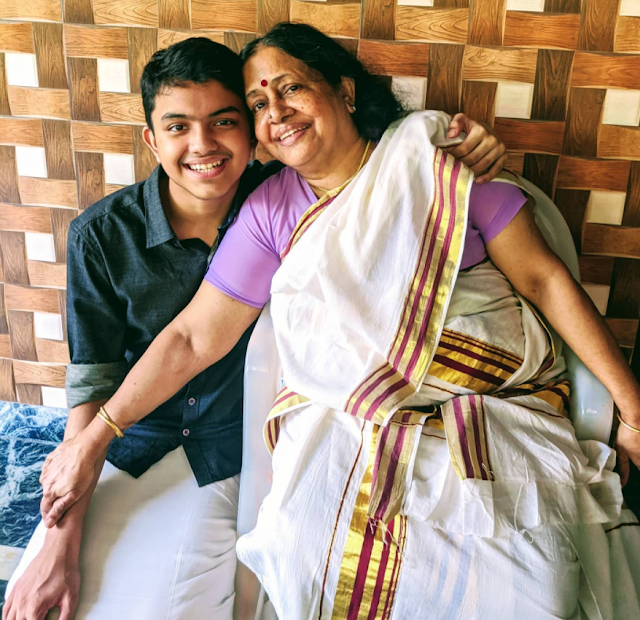'What is Kerala Kasavu saree' is a question I hear every time I wear it for a special function or an auspicious occasion. With Vishu around the corner, I decided to talk about what Kerala kasavu is. This year, the festival of Vishu is on April 15th, which gives me one more reason to talk about Kerala Kasavu sarees. Sharing one of my favourite photos when my mother and son dressed in traditional Kerala style!
[READ: Where to Eat in Kochi, Best of Kochi in 3 days, Heading to Kumarakom?]
Do you see the happiness that festivals like Vishu and Onam bring into our homes?
Also, read about the Saddest Vishu of my Life and Weekend trip to Kochi.
What is special about Kerala Kasavu saree?
'Kasavu', in Malayalam, refers to the gold thread, the zari, that is used to adorn the Kerala saree which is in a cream colour throughout the body and the border is in gold - the border part of the saree - is called Kasavu. The cream and gold combination in a Kerala Kasavu saree is its key highlight. A royal yet classy vibe!
What is the colour of Kerala Kasavu saree?
The classic Kerala kasavu saree comes in white and gold combination. However, Kerala Kasavu sarees come in different colour combinations nowadays, particularly for festive occasions. If you have to choose, opt for the white and gold colour combo.
What is the traditional dress of Kerala?
For women, the traditional dress of Kerala is mundu and neriyathu.
How can you tell the difference between mundu and neriyathu?
While mundu refers to the lower garment, neriyathu refers to the upper part of the garmet which is tucked in and worn over the shoulder. This is commonly called 'Set mundu' saree or Kerala set mundu. This is different from the Kerala Kasavu saree. The Kerala set and mundu compriss of unstitched upper and lower garments. The case of 'Setum mundum', as Keralites call it, has an upper garment called 'Neriyathu' which is tucked into the waist and draped on the left shoulder, whereas the mundu is the lower garment that is worn around the waist.
Sharing a photo we clicked with my parents on Vishu few years ago. In this pic, my mother is wearing a traditional Kerala set and mundu.
Wearing Kerala Kasavu saree on Vishu is special.
Festive occasions take me back to the time when my grandmother and mother used to open the almirah and discuss what to wear!
These are my precious moments with my loved ones.
How are your Vishu festival plans? Do drop me your plans for the festivities!
Wish you all a very happy and prosperous Vishu in advance!


Comments